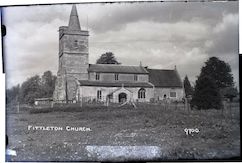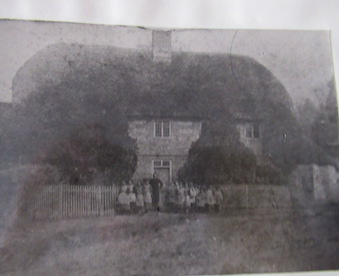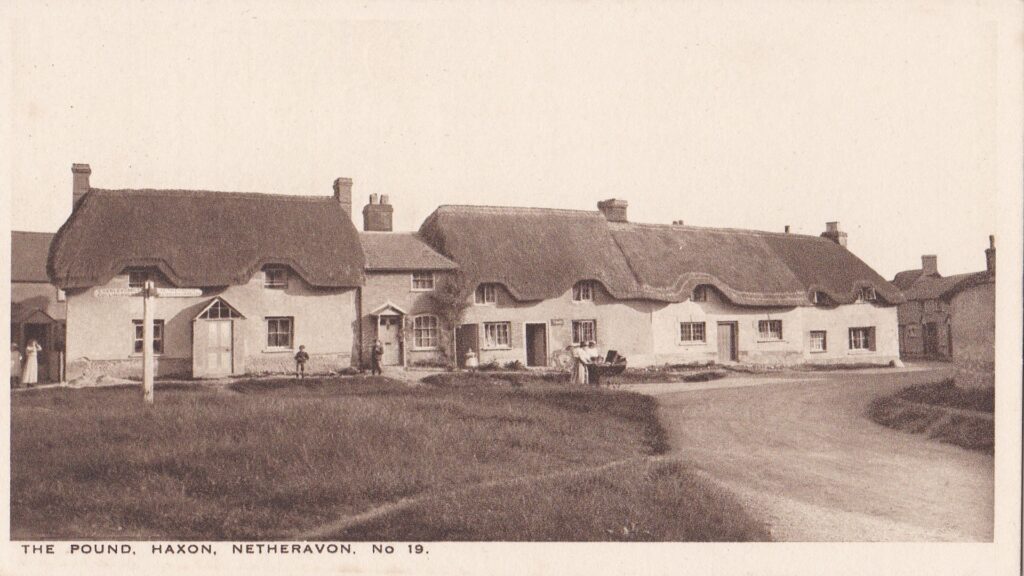Fittleton
Fittleton is set in downland, mostly to the east of the village, from where there are magnificent views over to the dominating hillfort of Sidbury Hill.
Ancient remains include barrows of all shapes, prehistoric field systems and remains of settlements. Excavations around Beach’s Barn indicate a large Romano – British settlement.
The name of the village derives from a Saxon personal name, Fitela , which became Viteletone in Domesday Book 1086.
Fittleton has some significant large buildings. The church, the former Rectory, the Manor House and the school. The medieval cottages which survive are made of timber, flint, cob (a mixture of soil, chalk, cow and horse manure and hair) and clunch (chalk blocks quarried from the “cliff” below Airfield Camp).
Both Haxton and Fitttleton have lost many cottages in the 19th and 20th centuries, including some alongside Haxton Pound, some on the Everleigh Road and some in The Warren. Those remaining have mostly been extended or merged to create larger homes.
Fittleton School
The establishment of the school in the early part of the C18th was but part of the considerable charitable giving which is marked by various monuments in the church. A school had been set up by 1712 and was probably held in the church. The fine thatched building of 1726 accommodated the schoolmaster, his family and ten poor schoolboys. Extra classrooms were added in 1843, 1872 and 1934.
The Hicks Beach family bought back Fittleton Manor and Manor Cottages nearby after the sale of the rest of the estate in 1898. The large house was initially rented off but from 1946 -1965 it was the home of Hicks Beach unmarried sisters. The sisters involved themselves in village life and the tall and straight backed Lady Victoria was to be seen pushing the wheelchair of her sister Lady Susan around the village. It was said (with a certain amount of pride) that Lady Victoria was the model for the figure of Britannia on the old penny, her father Sir Michael being Chancellor of the Exchequer.
Haxton
We have no record of Haxton until the 12th century . Its name is also likely to have originated in a personal name, Hacun. For most of its history Haxton has been more populous and wealthy than Fittleton. The first ordnance survey map, of 1817, omits the name Fittleton and calls the whole area Haxton. Today there is no obvious boundary between the two.
There was a chapel in Haxton in medieval times with land to support its chaplain.
Haxton Pound, in the middle of the village, was used to contain lost animals until their owners came forward and from there goes the lane to Haxton bridge, just downstream of the Netheravon mill. The crossing is likely to be ancient and the present red brick bridge of 1907 replaced a Victorian suspension bridge.
Beach’s Barn, off the Everleigh Road probably gets its name from the family of de la Beche, which owned Haxton in the C14th. Or it could be linked to the Beach family which first acquired part of the manor of Fittleton in 1655. The family was called Hicks Beach from 1790 following a marriage and its estate eventually comprised Fittleton, Haxton and Netheravon, including their downlands which were so valuable in the sale to the War Office in 1898.
The Green Dragon Inn
This former medieval inn (latterly a home called The Green Vine) is in Haxton, right on the boundary near Fittleton Manor. Inside is a wall painting with this advice:
“Disdain no man though he hath offended, The best of us will be amended”



